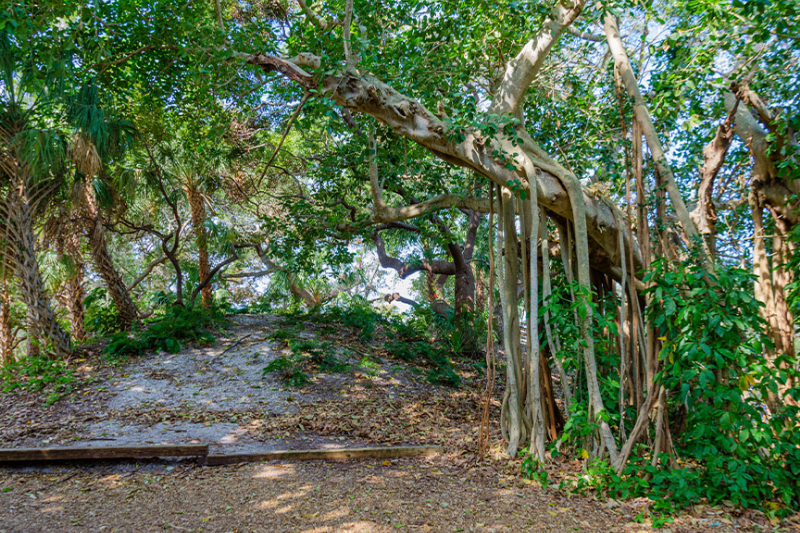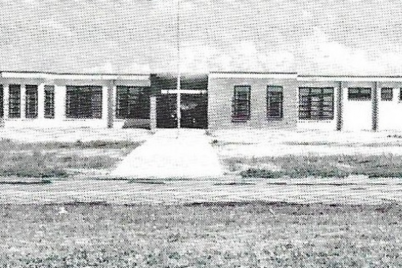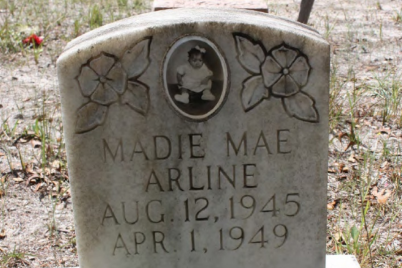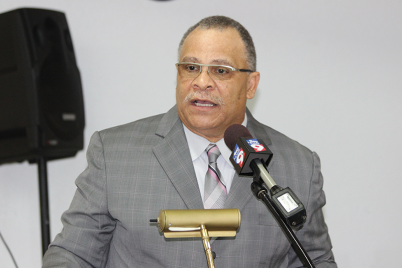Indian Mound Park, located at Mound Place and Bethel Way South, is home to one of St. Petersburg’s many historic Indian Midden. You can walk on the mound as well as read the history behind the mound.
BY JAMES A. SCHNUR, The Gabber
A disturbing pattern
TAMPA BAY — The practice of disturbing individual gravesites is nothing new. Neither is the wanton neglect of burial grounds. Questions about the stewardship and conditions at historically Black cemeteries have attracted renewed interest on both sides of Tampa Bay.
The recent discoveries of forgotten graves at the Robles Park Village and King High School sites in Tampa, along with two locations in Clearwater, have left many wondering how such neglect could happen at those former solemn grounds. Surveys for possible unmarked graves at another historically Black burial ground in Tampa, Memorial Park Cemetery, have also started.
Forgotten graves revealed by ground-penetrating radar (GPR) have shocked many. Similar reactions occurred a few years ago after investigations found unexpected bodies at the former Dozier School for Boys in Florida’s Panhandle.
Early patterns of disrespect
While GPR surveys at former burial sites in Tampa and Clearwater focus on historically Black cemeteries, Pinellas County’s history shows a larger pattern of disrespecting burial sites. This shameful legacy began long before Lincoln Cemetery was established in 1926, long before Pinellas separated from Hillsborough County in 1912, and even long before any African Americans lived in lower Pinellas.
By most accounts, the earliest recorded burial in present-day Pinellas County took place in 1853 on grounds that later became the Sylvan Abbey Cemetery along Sunset Point Road in eastern Clearwater. This does not mean, however, that the first person ever to perish in Pinellas did so in 1853.
Potter’s fields, often known as paupers’ graves, certainly existed. These unmarked sites offered a place where people buried their dead without any permanent marker. Any simple wooden posts or crosses that may have existed deteriorated over time.
Beyond these forgotten pioneer burial plots, other bodies were placed in the highly saline soils of Pinellas long before the first Europeans arrived in the New World. People have lived and died here for thousands of years.
Archaeologists and historians investigating the First Floridians have few archives to examine. These Native American cultures left no written records. Their populations quickly declined when they interacted with Spanish conquistadors and pirates in the 1500s.
Expeditions led by Pánfilo de Narváez in 1528 and Hernando de Soto in 1539 skirted along and probably passed through the Pinellas peninsula as these Spaniards sought gold and wealth. They left behind smallpox and other illnesses that wiped out the original indigenous populations in this area by the 1700s.
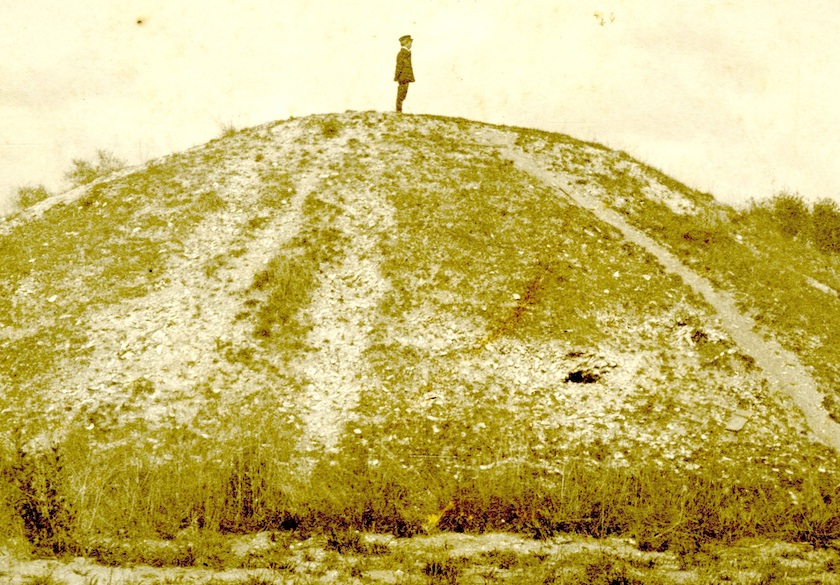
Photo courtesy of Heritage Village Archives and Library
Early white pioneers began to settle in Pinellas in the 1830s. The first documented permanent settler, Odet Philippe, took up residence in the shadow of the large Native American mound near Safety Harbor. Philippe and other settlers searched and sometimes scavenged mounds and smaller middens left by the Tocobaga and other Native American cultures. They looked for treasures and sometimes desecrated skeletons.
Not all mounds have burials. Most do not. But successive waves of settlers and residents picked through every mound they could find, from the large one at Safety Harbor to smaller ones at Maximo Moorings and everything in between.
Oldtimers may even remember when the St. Petersburg medical complex, now known as Bayfront Health, was called Mound Park Hospital to honor a large indigenous mound nearby. The mound disappeared in the 1950s. The hospital changed its name about a decade later.
A nightmare way to sell the ‘Florida Dream’
Eugene M. Elliot was an entrepreneur who helped George S. Gandy finance the construction of the first bridge to connect Tampa and Pinellas County. The original Gandy Bridge opened in November 1924 as a private toll road.
Aware of the potential traffic on this bridge, Elliot bought much of Weedon Island in 1923 and planned to develop luxurious home sites. Knowing Weedon’s history as a place with middens and earlier Native American settlements, Elliot schemed of a way to increase his investment’s value.
Elliot placed some bones, trinkets, and pottery pieces on his property near St. Petersburg’s future gateway with Tampa. He then contacted the Smithsonian Institution, expecting that the “discovery” of these fake relics by scientific authorities would encourage newcomers who wanted to buy land and build homes alongside the small mounds.
A team of archaeologists led by Jesse Walter Fewkes came from the Smithsonian. They began to conduct excavations at Weedon Island in November 1923. They bypassed the items Elliot had planted, digging deeper to find a burial mound and other significant items.
Elliot ran full-page advertisements in local newspapers encouraging people to watch the Smithsonian excavations and consider purchasing land from him. At one point, he even offered to give visitors pottery fragments as a gift.
The land boom’s decline and Fewkes’s findings killed Elliot’s plans in the mid-1920s. Years later, he looked back with a sense of regret – not because of the damage he did to actual Native American sites, but for the financial losses of promoting a failed development. He allegedly told a friend, “To think I spent all that money to plant those phony bones!”
An old story writ new
Long after Elliot’s failed plans came to an end, others continued to search for Native American bones. Areas of the Bayshore Homes site near Abercrombie Park and the mouth of Long Bayou in western St. Petersburg have yielded skeletons of early Floridians. Homes and businesses in the area where Tyrone Boulevard crosses Park Street occupy some of these sites.
Archaeologists also found remains around Joe’s Creek in western Lealman. After professional surveyors left, amateurs scoured the area. A librarian received a telephone call nearly 10 years ago from a woman living in Oregon with an important reference question. Her father had passed away after the family had moved from St. Petersburg to the Pacific Northwest.
While going through her father’s belongings, she found a human skull in a box with a note that he had retrieved it from Joe’s Creek in the early 1950s. The librarian directed her to the proper authorities so it could be handled in accordance with the law.
The practices of disturbing, collecting, and sometimes displaying indigenous remains have obviously angered members of the Native American community. Indeed, when evidence of a largely undisturbed Tocobaga site near St. Petersburg-Clearwater International Airport became known about 30 years ago, members of the American Indian Movement guarded this sacred space while professional surveys took place.
They were there to protect the location from thrill-seekers and collectors. Fieldwork at this site, now called “Yat Kitischee,” was done respectfully.
Legislation has helped. The federal government enacted the Native American Graves Protection and Repatriation Act in November 1990. This act applies to cultural items, human remains, and sacred objects found on federal lands or within institutions that receive federal funding.
Although NAGPRA does not generally apply to privately owned or state lands, other statutory provisions now discourage or prohibit the violation of aboriginal sites at these places as well. Some regulations include legal consequences.
Similar to the desecration of indigenous sites in Pinellas, the historic problems at Lincoln Cemetery have roots in a system that has treated some people as inferior because of their racial ancestry. Lincoln became a second-chance burial site for people who were considered second-class citizens during the years of mandatory racial segregation.
In our next installment of “A Grave Situation,” we visit the Tropicana Field site when parts of it were a potter’s field rather than a “Field of Dreams.”

